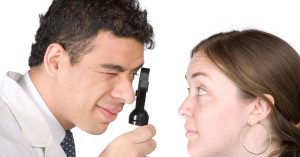Call for your appointment today 914-666-4665 | Mt. Kisco, New York

by Daniel J. Cameron, MD MPH
“On presentation to our hospital, the patient continued to complain of severe headaches and was noted to have mild unilateral right-sided facial droop and a diffuse macular rash throughout the body,” explains Kantamaneni in his article, A Case of Early Disseminated Neurological Lyme Disease Followed by Atypical Cutaneous Manifestations.
The woman had a history of hypertension, right-sided thyroidectomy, and stroke. But given that she lived in an endemic region, had an atypical rash and neurologic symptoms, she was started on intravenous ceftriaxone for suspected Lyme disease (LD).
“Our case is peculiar due to the atypical nature of the rash and occurrence of early disseminated neurological disease before the development of diffuse rash.”
 Within 24 hours of starting antibiotic therapy, the patient’s headache, fever, lethargy, and neurological manifestations, including a facial droop, resolved. She was treated for 21 days. At a 3-month follow-up, she reported a complete resolution of all of her symptoms.
Within 24 hours of starting antibiotic therapy, the patient’s headache, fever, lethargy, and neurological manifestations, including a facial droop, resolved. She was treated for 21 days. At a 3-month follow-up, she reported a complete resolution of all of her symptoms.
Lyme serology was ordered. ELISA was positive for IgM antibody, and confirmed by an IgM positive Western blot test (IgM positive for 39, 41; IgG positive for 23 and 41). “Western blot testing was negative for IgG as only two of the 10 bands came back positive, the required being five out of ten,” states Kantamaneni. “Real-time polymerase chain reaction (PCR) of the blood sample tested positive for DNA of Borrelia burgdorferi sensu stricto.”
“Our patient did not have the classic “targetoid” EM rash on initial presentation,” he points out. “Another unique feature was development of the rash after initial neurological manifestations.”
[bctt tweet=”The lack of a bull’s eye rash & typical symptoms shouldn’t exclude Lyme disease.” username=”DrDanielCameron”]
The authors point out that “the suspicion of LD should be very high in endemic areas.” And furthermore, “The lack of the classic bull’s eye appearing rash and typical symptoms should not completely exclude the presence of LD.”
Serologic testing, Kantamaneni states, should be used to support a clinical diagnosis of Lyme disease, not to establish or exclude it. “A positive or negative serologic test simply changes the probability that a patient has been infected with Borrelia burgdorferi.”
If a clinician suspects early disseminated Lyme disease, intravenous antibiotics “should be started immediately without waiting for serology as prompt initiation of antibiotics is paramount to making a quick and a full recovery.”
References:
- Kantamaneni, V, Sunder, V, Bilal, M, Vargo, S. Case Reports in Infectious Diseases. April 23, 2017.




How do we get this information communicated to the medical field?
This post was made possible by the growing numbers of doctors publishing their findings int he literature.
My mother-in-law had a tick bite last Sept./ Oct. time frame. She immediately went to the urgent care, received the usual antibiotic. She has since been tested 3 times for Lyme (all negative) and given the antibiotic treatment a second time. I asked the Dr. to test for other tick diseases, buy the request was ignored. She is experiencing headache, nausea, severe muscle and joint pain, fatigue. She did not have the typical “bulls eye” rash, but recently developed a “scalp infection” and 3 red marks on her neck (under her ear) first on the right side, then the same on the left side. She is currently experiencing such back / hip pain she can hardly walk! Is there anyone I can take her to locally to Corning NY?
Sorry to hear your mother-in-law remains ill. It is important that should continue to be evaluated for other illnesses in addition to tick borne illnesses. If she has a tick borne illness there are other treatments beyond doxycycline e.g. treatment for Babesia. You could contact several societies e.g. Lyme Disease Association, ILADS, and Global Lyme Alliance for suggestions of professionals that work with tick borne illnesses. You could also call our office at 914 666 4665.
I live in NC. In early June, I noticed a weird “mole” on my lower back and was glad I had an upcoming dermatology appointment. About 3-5 days went by, my husband recognized that it was a tick. He pulled it off with tweezers and flushed it. A few days later (June 9), I went to urgent care as there was a very itchy bump with red around it where the tick was removed. I was already on Amox (500 mg/3xs a day for bad tooth abscess) which began June 5 so I just continued that protocol which lasted about 2 1/2 weeks total. Lab work done on June 9 was negative which we would expect because initial bite was maybe only 2 weeks prior. Since then however, the bite has continued to itch and now it has 3-4 additional small bumps in close proximity to the initial bite that also itch. I feel that the whole area of initial bite and subsequent small bumps has a slightly off color to it. I also feel like there is a new itchy spot on my head…..I went back to Urgent Care yesterday because I find this lasting reaction very odd. Is this a normal reaction to a tick bite or is it indicative that something is brewing? My bloodwork should come back by tomorrow. I also have pictures of bite from June 9 and current that shows the progression/difference.
It is common for the skin to remain irritated after a bite without an infection. It is also common for the tests to be negative for tick borne illnesses if antibiotics were prescribed for other reasons. You will need to be assessed by a doctor directly to make the right decision.
Thank you Dr. Cameron! I am set to see a ILADS doc this coming Wednesday. I know I am not well and symptoms of Lyme are there. I am grateful for you and other doctors like yourself who are providing real help to the public.